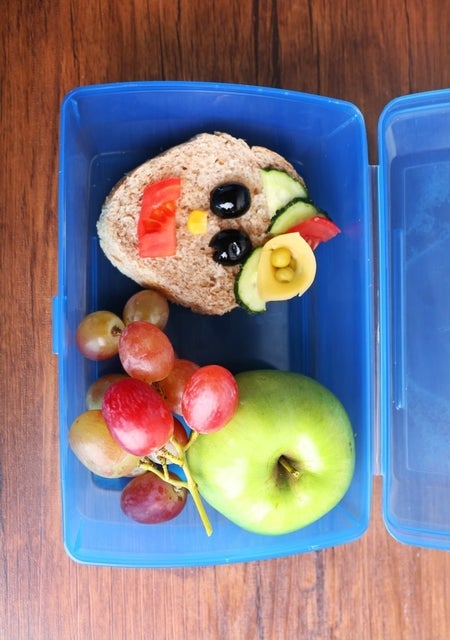Personalising Nutrition


As we live in an era of customisation, it is no surprise that Personalised Nutrition (PN) is a fast-growing field. This is important for healthcare practitioners (HCPs), as globally, the improvements to our diets could potentially prevent 1 in every 5 deaths.1
In developing countries, PN could identify individual deficiencies and target these by recommending specific locally available food items. 2 This would help overcome under-nutrition while preventing generalised and countrywide distributions of supplements.2
PN promotes a balanced diet, simultaneously targeting deficient as well as excessive intakes. 2 This might also help decelerate the prevalence of the double burden of malnutrition in developing countries. 2
To deliver PN, HCPs have recognised various individualised factors including dietary behaviours, genotypes, gene expression and the unique microbiome composition present in each person.3
The growth of internet access & PN demand
With the increasing access to the internet across Africa, a growing number of African populations can make use of PN apps and services (see listed apps and technologies below). 4 In Africa, the PN market has grown significantly in recent years, with an increased consumer demand for healthier lifestyles and food intake.5 It is predicted that within the next 5 years, the Middle East and Africa regions will lead the growth of the PN market.5
Maximising nutrition
Currently, registered dietitians and HCPs make use of dietary recalls, lifestyle assessments and biomarkers, among other tools, to individualise nutritional interventions for patients.3 Unfortunately, none of these tools are optimal for generating precise or unique patient information. This has resulted in some nutrition professionals using various genomics tests and markers to create more accurate personalised assessments.7,8,9
 Over time, as more single-nucleotide polymorphisms (SNPs) are identified and additional diet/gene relationships are clarified, PN could become more prevalent and even exist in routine care.6 In the short-term though, HCPs and dietitians can use genomics information alongside biomarkers and other clinical tools to take part in the evolvement of PN.6
Over time, as more single-nucleotide polymorphisms (SNPs) are identified and additional diet/gene relationships are clarified, PN could become more prevalent and even exist in routine care.6 In the short-term though, HCPs and dietitians can use genomics information alongside biomarkers and other clinical tools to take part in the evolvement of PN.6
Nutritional Genomics
Nutritional scientists study the cellular level interaction of genes and nutrients to control phenotypic outcomes (i.e. disease).6 This overarching study is termed nutritional genomics, a growing area of interest for both health and nutrition researchers who aim to develop PN standards of care.7 The field of nutritional genomics is further expanded to nutrigenetics and nutrigenomics.
Understanding nutrigenomics
Nutrigenomics is the study of the relationship between genomics, nutrition and health,10 or the interactions between dietary components and the genome.7 This field of study includes research on how the whole body responds to micro- and macronutrients, alongside the relationship/interaction between single genes and single gene/food compound interactions.10
With advances in genomics, it became apparent that a better understanding of individual characteristics (such as one’s genotype) leads to an improved customisation of nutritional therapies.11 Using research from this field, a dietitian or HCP can assess an individual’s genetic makeup and offer advice on beneficial eating patterns.10 For example, gene variants might indicate that an individual’s body wouldn’t benefit from a vegan diet or won’t adapt well to a keto diet due to genomic tendencies for fat metabolism.10
 Understanding nutrigenetics
Understanding nutrigenetics
Nutrigenetics is the study of how genetic variability affects individual metabolism of nutrients and, in turn, their health consequences.7 Genetic variability affects the way individuals process dietary cholesterol 7,12, folate 7,12, choline 7, lactose12, starch13 and caffeine14, among other nutrients.
Such variability across these categories can influence an individual’s risk of developing cardiovascular diseases, micronutrient deficiencies7, inflammation, oxidative stress, dyslipidemia15, lactose intolerance, hypertension 12 and obesity 7, 12, 15.
Personalised microbiomes
Even though all humans share a similar “core microbiota”16, 17, evidence shows that, when compared, individuals’ gut microbiomes can differ by as much as 90%18. The composition and status of a microbiome is largely dependent on an individual’s diet, health status and other lifestyle factors 17,19, rather than the sole influence of one’s genetics.
Read more about NNIA’s take on the human microbiome in our news section.
Technologies for dietitians promoting PN
Dietitians and HCPs can make use of technologies that work for their patients to monitor individuals’ general health.
Some of the technologies available, globally, include:6
 1. Tracking & monitoring devices
1. Tracking & monitoring devices
- Tracks various lifestyle factors in new & easy ways, including:
- Movement
- Sleep
- Calculates:
- Movement
- Nutrient intake
- Calories burned
- Offers thousands of apps to use
2. Wearables
- Fitbits & the Apple Watch, etc.
- Calculates:
- Distance walked
- Calories burned
- Duration & intensity of activity
- Vast array of numerical health measurements
- Newer measurements include:
- Weight;
- BMI
- Heart-rate
- GPS
- Sleep stage analysis
- Oxygen saturation
- Menstruation tracking
3. PN services
- Online direct-to-customer services include:
- Genetic testing kits
- Microbiome analyses
- Disease-focused services
- Nutrition & fitness programmes
- Deliver actionable steps
- Widely available for personal use
 4. Direct-to-customer genetic testing services
4. Direct-to-customer genetic testing services
- Personalised health recommendations:
- Professional lifestyle management coaching
- Meal plans
- Supplement packs
- Athletic training advice
All these services are based on individual omics analysis. Companies that offer direct-to-customer genetic testing services include OME Health, Inside Tracker, LoseIt! and 23andMe. These companies use science to educate customers & healthcare providers about individual risks of developing certain conditions & advise adoption or avoidance of behaviours via saliva, blood, and/or faecal samples.
5. Microbiome analysis
Microbiome sequencing and interpretation services, which involve determination of the composition and function of a community of microorganisms.20 Companies that offer these services include Viome and EasyDNA.
6. Disease-focused services
- Generally offered through apps, these services deliver:
- Biomarker tracking
- Remote physician supervision
- Online community support
- Individualised treatment plans
 Targeting users with specific chronic diseases and collecting information from disease and nutrition-focused research to encourage healthful lifestyle changes, the most prevalent conditions addressed through these services are diabetes management and weight loss. Companies that offer these services include Yes Health and Vida Health.
Targeting users with specific chronic diseases and collecting information from disease and nutrition-focused research to encourage healthful lifestyle changes, the most prevalent conditions addressed through these services are diabetes management and weight loss. Companies that offer these services include Yes Health and Vida Health.
7. Food/nutrition tracking services
- Food tracking
- Calorie counting
- Meal planning
Companies that offer these services MyFitnessPal, SmartPlate and LoseIt!.
The importance & possibilities of implementing PN
In the last years, PN has gained momentum, within scientific fields and the public.2 PN reveals enormous possibilities in various environments to educate the public while contributing to a balanced nutritional environment, worldwide. 2 PN affords individuals the opportunity to take responsibility for their own health in a most thorough and complete methodology. 2
Implementing PN services in rural areas of developing countries via the use of smartphones is currently limited by both the availability of suitable devices as well as mobile internet access.2 Yet, statistics show an increase of internet access at home in developing countries, from 9% in 2005 to 43% in 2017, which assumes higher coverage of internet every year.21 Until PN can be accessed more easily via smartphones, PN approaches can be put into practice via suitably equipped advisors (e.g. nurses or community workers).2
The above-listed technologies, in turn, can be used to serve different patient requirements. Dietitians and HCPs will decide which of them works best for each patient, taking various factors into account, some of them being region-availability, affordability and patient-specific requirements.
References:
-
Afshin, A., Sur, P., Fay, K., Cornaby, L., Ferrara, G., Salama, J., Mullany, E., Abate, K., Abbafati, C., Abebe, Z., Afarideh, M., Aggarwal, A., Agrawal, S., Akinyemiju, T., Alahdab, F., Bacha, U., Bachman, V., Badali, H., Badawi, A., Bensenor, I., Bernabe, E., Biadgilign, S., Biryukov, S., Cahill, L., Carrero, J., Cercy, K., Dandona, L., Dandona, R., Dang, A., Degefa, M., El Sayed Zaki, M., Esteghamati, A., Esteghamati, S., Fanzo, J., Farinha, C., Farvid, M., Farzadfar, F., Feigin, V., Fernandes, J., Flor, L., Foigt, N., Forouzanfar, M., Ganji, M., Geleijnse, J., Gillum, R., Goulart, A., Grosso, G., Guessous, I., Hamidi, S., Hankey, G., Harikrishnan, S., Hassen, H., Hay, S., Hoang, C., Horino, M., Ikeda, N., Islami, F., Jackson, M., James, S., Johansson, L., Jonas, J., Kasaeian, A., Khader, Y., Khalil, I., Khang, Y., Kimokoti, R., Kokubo, Y., Kumar, G., Lallukka, T., Lopez, A., Lorkowski, S., Lotufo, P., Lozano, R., Malekzadeh, R., März, W., Meier, T., Melaku, Y., Mendoza, W., Mensink, G., Micha, R., Miller, T., Mirarefin, M., Mohan, V., Mokdad, A., Mozaffarian, D., Nagel, G., Naghavi, M., Nguyen, C., Nixon, M., Ong, K., Pereira, D., Poustchi, H., Qorbani, M., Rai, R., Razo-García, C., Rehm, C., Rivera, J., Rodríguez-Ramírez, S., Roshandel, G., Roth, G., Sanabria, J., Sánchez-Pimienta, T., Sartorius, B., Schmidhuber, J., Schutte, A., Sepanlou, S., Shin, M., Sorensen, R., Springmann, M., Szponar, L., Thorne-Lyman, A., Thrift, A., Touvier, M., Tran, B., Tyrovolas, S., Ukwaja, K., Ullah, I., Uthman, O., Vaezghasemi, M., Vasankari, T., Vollset, S., Vos, T., Vu, G., Vu, L., Weiderpass, E., Werdecker, A., Wijeratne, T., Willett, W., Wu, J., Xu, G., Yonemoto, N., Yu, C. and Murray, C., 2019. Health effects of dietary risks in 195 countries, 1990–2017: a systematic analysis for the Global Burden of Disease Study 2017. The Lancet, 393(10184), pp.1958-1972.
-
Kolossa S, Gedrich K., 2019. The Concept of Personalized Nutrition in Benin as Example for Developing Countries. Int J Glob Health 2:1.
-
Matusheski, N., Caffrey, A., Christensen, L., Mezgec, S., Surendran, S., Hjorth, M., McNulty, H., Pentieva, K., Roager, H., Seljak, B., Vimaleswaran, K., Remmers, M. and Péter, S., 2021. Diets, nutrients, genes and the microbiome: recent advances in personalised nutrition. British Journal of Nutrition, pp.1-9.
-
Internetworldstats.com. 2021. Africa Internet Users, 2021 Population and Facebook Statistics. [online] Available at: <https://www.internetworldstats.com/stats1.htm> [Accessed 1 September 2021].
-
Market Data Forecast. 2021. MEA Personalized Nutrition Market | 2021 - 2026 | UAE, Israel, KSA, South Africa, Egypt. [online] Available at: <https://www.marketdataforecast.com/market-reports/middle-east-and-africa-personalized-nutrition-market> [Accessed 1 September 2021].
-
Kanter, M. and Desrosiers, A., 2019. Personalized Wellness Past and Future. Nutrition Today, 54(4), pp.174-181.
-
Camp, K. and Trujillo, E., 2014. Position of the Academy of Nutrition and Dietetics: Nutritional Genomics. Journal of the Academy of Nutrition and Dietetics, 114(2), pp.299-312.
-
DeBusk, R., 2009. Diet-Related Disease, Nutritional Genomics, and Food and Nutrition Professionals. Journal of the American Dietetic Association, 109(3), pp.410-413.
-
Yuskiv, N., Potter, B., Stockler, S., Ueda, K., Giezen, A., Cheng, B., Langley, E., Ratko, S., Austin, V., Chapman, M., Chakraborty, P., Collet, J. and Pender, A., 2019. Nutritional management of phenylalanine hydroxylase (PAH) deficiency in pediatric patients in Canada: a survey of dietitians’ current practices. Orphanet Journal of Rare Diseases, 14(1).
-
Garone, S., 2021. Nutrigenomics Might Be the Future of How You Eat. [online] Healthline. Available at: <https://www.healthline.com/health/food-nutrition/nutrigenomics-might-be-the-future-of-how-you-eat?slot_pos=article_3&utm_source=Sailthru%20Email&utm_medium=Email&utm_campaign=authoritynutrition&utm_content=2021-04-02&apid=37680288&rvid=8ecc2fed14a0396f8ad0b852734cb92931986904f71d02a32aea1fea0da99c97&c=601003322941#benefits> [Accessed 17 August 2021].
-
Moore, J.B., 2020. From personalised nutrition to precision medicine: the rise of consumer genomics and digital health. Proceedings of the Nutrition Society, 79(3), pp.300-310.
-
van Ommen, B., van den Broek, T., de Hoogh, I., van Erk, M., van Someren, E., Rouhani-Rankouhi, T., Anthony, J., Hogenelst, K., Pasman, W., Boorsma, A. and Wopereis, S., 2017. Systems biology of personalized nutrition. Nutrition Reviews, 75(8), pp.579-599.
-
Marcovecchio, M., Florio, R., Verginelli, F., De Lellis, L., Capelli, C., Verzilli, D., Chiarelli, F., Mohn, A. and Cama, A., 2016. Low AMY1 Gene Copy Number Is Associated with Increased Body Mass Index in Prepubertal Boys. PLOS ONE, 11(5), p.e0154961.
-
Guest, N., Corey, P., Vescovi, J. and El-Sohemy, A., 2018. Caffeine, CYP1A2 Genotype, and Endurance Performance in Athletes. Medicine & Science in Sports & Exercise, 50(8), pp.1570-1578.
-
Curti, M., Jacob, P., Borges, M., Rogero, M. and Ferreira, S., 2011. Studies of Gene Variants Related to Inflammation, Oxidative Stress, Dyslipidemia, and Obesity: Implications for a Nutrigenetic Approach. Journal of Obesity, 2011, pp.1-31.
-
National Institutes of Health Human Microbiome Project. NIH Human Microbiome Project - Home. [online] Available at: <https://hmpdacc.org/hmp/> [Accessed 17 August 2021].
-
Gupta, V., Paul, S. and Dutta, C., 2017. Geography, Ethnicity or Subsistence-Specific Variations in Human Microbiome Composition and Diversity. Frontiers in Microbiology, 8.
-
Ursell, L., Metcalf, J., Parfrey, L. and Knight, R., 2012. Defining the human microbiome. Nutrition Reviews, 70, pp.S38-S44.
-
Chen, L., Zhang, Y., Huang, T. and Cai, Y., 2016. Gene expression profiling gut microbiota in different races of humans. Scientific Reports, 6(1).
-
Claesson, M., Clooney, A. and O'Toole, P., 2017. A clinician's guide to microbiome analysis. Nature Reviews Gastroenterology & Hepatology, 14(10), pp.585-595.
-
ITU. 2021. Statistics. [online] Available at: <https://www.itu.int/en/ITU-D/Statistics/Pages/stat/default.aspx> [Accessed 1 September 2021].
If you liked this post you may also like




